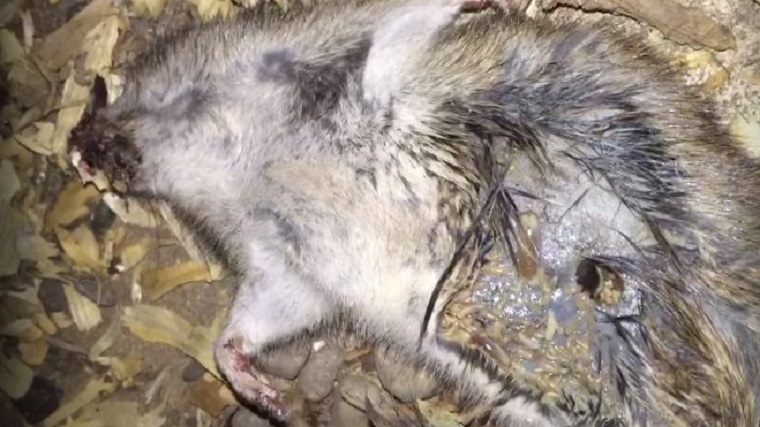-
info@aaanimalcontrol.com
Call us for help in your town
Humane Wildlife Education
How to properly dispose of a dead animal carcass
Need wildlife removal in your hometown? We service over 500 USA locations! Click here to hire us in your town and check prices - updated for year 2020.
The first thing that many homeowners do when they have a dead pet or wild animal to dispose of is dig a hole to bury them in the back garden. This is entirely the incorrect way to deal with this problem, and actually causes many more problems than it solves.

To start with, the stench of that animal will not go away just because you have buried it underground, even if you put it in a shoebox and then a garbage bag, first. The stench will be strong enough for other animals to smell it, and there are plenty of scavengers that at carrion — dead carcasses of other animals that have died from other predators, natural causes, or other reasons. It won't be long before a neighborhood cat, your own dog, or another predator digs up the carcass. That won't be a pleasant sight first thing in the morning. You can prevent this by adding a thick layer of gravel or rock, but you would need to consider adding this layer all the way around for full-time and long-term protection. Otherwise, burrowing and digging creatures would have no problems going below the level of rock or gravel.
Secondary to that, you haven't actually disposed of the body and if any disease threats are still present, they can still be passed along or transmitted. The body, as it decomposes, will release bacteria that could also spread disease, and it will also attract flies, maggots, and other nasty bugs that we are sure that you don't want hanging around.
Whenever dealing with the carcass of a dead animal, you MUST ensure you wear the thickest and most protective gloves that you can get your hands on. You should also make sure that all skin is fully covered too, wearing not only a long sleeved shirt, but trousers, rather than shorts. This is to eliminate the chances of you contracting any parasites, such as fleas, ticks, and mites, from the carcass.
You will also want to wear other safety equipment too, including protective eye googles and a breathing mask. As we have mentioned, the decomposition process will released certain bacteria from the body, and if these are airborne, any diseases spores will be quickly spread.
If you have come across a wild dead animal that you need to dispose of, it might be worth getting in touch with the local or city authorities. They may have a service that you can use. Generally, incineration is the best method of disposal, but there are safety concerns when incinerating carcasses on your own land. Once again, we would highly recommend that you wear breathing masks when doing this to prevent the inhalation of disease spores.
For more information, you may want to click on one of these guides that I wrote:
How much does dead animal removal cost? - get the lowdown on prices.
How to get rid of dead animals - my main dead animal removal info guide.
Example dead animal removal photographs - get do-it-yourself ideas.
Dead animal job blog - learn from great examples of dead animal jobs I've done.


















